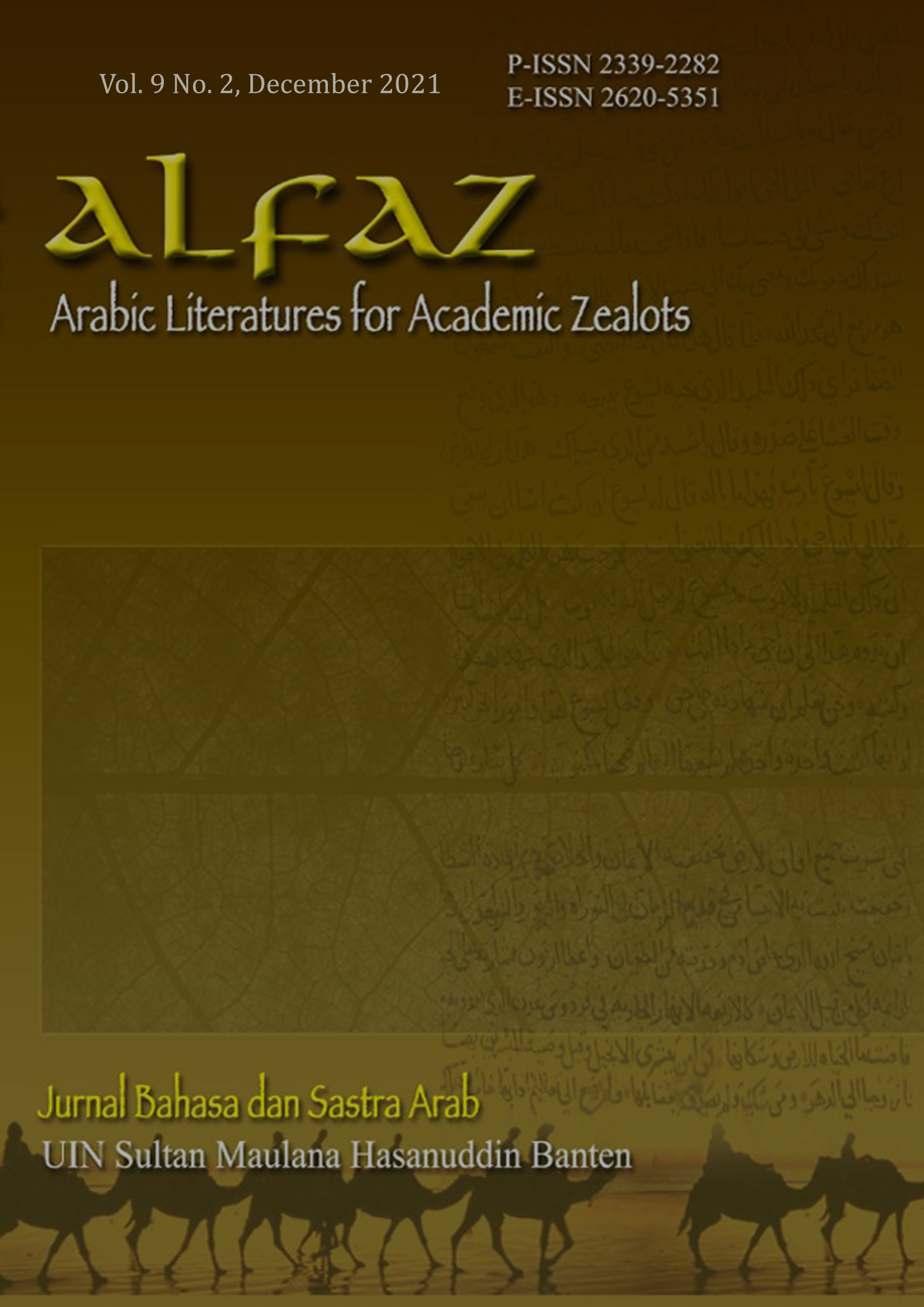al-Af’âl al- Ṡulâṡiyah al-Mazîdah wa Ma’ânîhâ fî Kitâb Safînah al-Najâh (Dirâsah Taḥlîliyyah Ṣarfiyyah)
DOI:
https://doi.org/10.32678/alfaz.Vol9.Iss2.6019Abstract
Kitab Safînah al-Najâh, together with other classical Arabic books can explain how Indonesian Muslims live their lives in regard with religious aspects. The book since long has been widely thought in most of traditional Islamic education institutions (pesantren) in Indonesia for it is considered relatively concise but comprehensive, covering basic laws of daily religious activities. The conciseness of the book, however, may lead to problems of misinterpretation. The biggest assumption of this regard relies on the use of complex broken verbs, called in Arabic as Fi'il Ṡulâṡi Mazîd, which refer to different meanings. This article aims at analysing the meanings that may come from the use of Fi'il Ṡulâṡi Mazîd in the book Safinah al-Naja from the perspective of morpho-semantic. It is found 55 patterns of Fi'il Ṡulâṡi Mazîd. From this amounts, there are 26 verbs with additional one character (Mazîd bi harfin), 25 verbs with additional two characters, and 4 verbs with additional three characters. Some of these verbs come with various meanings
Downloads
Downloads
Published
Issue
Section
License
Authors retain copyright and grant the journal right of first publication with the work simultaneously licensed under a CC BY NC SA License that allows others to share the work with an acknowledgement of the work's authorship and initial publication in this journal.







